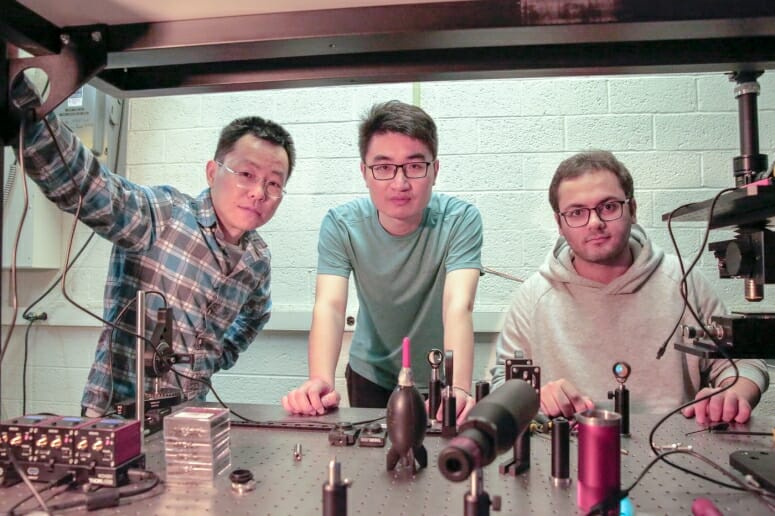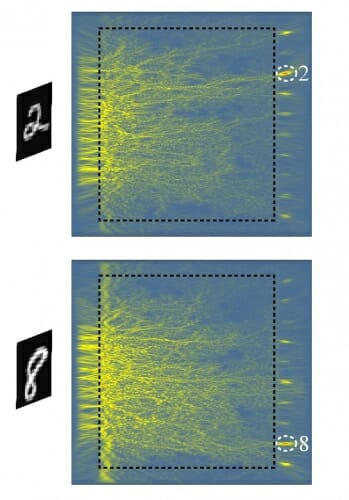The Vision of Artificial Vision
Researchers seeking to upgrade modern day smartphones have devised a way to create “smart” glass—a method capable of image recognition free from sensors, circuits, or power sources. "We're using optics to condense the normal setup of cameras, sensors and deep neural networks into a single piece of thin glass," says Zongfu Yu, an electrical and computer engineering professor at UW-Madison. "This is completely different from the typical route to machine vision.”

University of Wisconsin: From left to right, Zongfu Yu, Ang Chen and Efram Khoram developed the concept for a “smart” piece of glass that recognizes images without any external power or circuits. PHOTO BY SAM MILLION WEAVER.
"The true power of this technology lies in its ability to handle much more complex classification tasks instantly without any energy consumption," says Ming Yuan, a collaborator on the research and professor of statistics at Columbia University. "These tasks are the key to create artificial intelligence: to teach driverless cars to recognize a traffic signal, to enable voice control in consumer devices, among numerous other examples."
The idea behind smart glass consists of moving beyond artificial intelligence in inert objects. “We're accustomed to digital computing, but this has broadened our view," says Yu. "The wave dynamics of light propagation provide a new way to perform analog artificial neural computing."
The new proof of concept method makes glass pieces from identified handwritten numbers where light emanating from an image of a number will enter at one end of the glass and then focuses to one of nine specific spots. "We're accustomed to digital computing, but this has broadened our view," says Yu. "The wave dynamics of light propagation provide a new way to perform analog artificial neural computing"
University of Wisconsin: Light passing through “smart” glass is bent in a particular pattern depending on the scene, image or (in this case) written number facing the glass. If the light matches an expected pattern, the glass “recognizes” what it sees. IMAGE COURTESY ZONGFU YU
"We could potentially use the glass as a biometric lock, tuned to recognize only one person's face" says Yu. "Once built, it would last forever without needing power or internet, meaning it could keep something safe for you even after thousands of years."
Findings of the study were published in the journal Photonics Research and describe the design of the glass similar to the machine learning process. "The fact that we were able to get this complex behavior with such a simple structure was really something," says Erfan Khoram, a graduate student in Yu's lab.
Watch the video below to learn more:
"We're always thinking about how we provide vision for machines in the future, and imagining application specific, mission-driven technologies." says Yu. "This changes almost everything about how we design machine vision."
Source: University of Wisconsin









